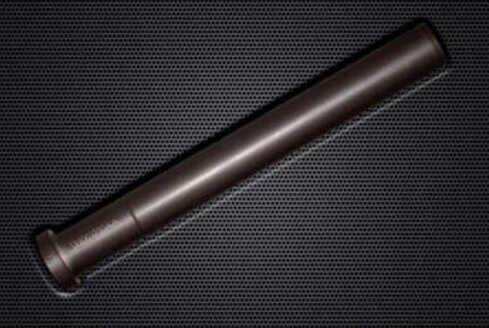In the field of plastic injection molds, producers are very careful when it is time to decide which basic material should be used for their molds. Up to now, some companies still use conventional tool steels, but if this material is less expensive for the buyers’ side, it still presents a lot of inconveniences compared to high conductivity copper alloys.
A high conductivity copper alloy is – within the context of this article – a copper based material that through a combination of alloying and manufacturing techniques, retains the higher thermal conductivity that is inherent in copper, but with a degree of hardness that allows it to be used in the machined condition within a production environment.
The Switzerland based company AMPCO METAL, who celebrates its 100th birthday this year, is specialized in copper alloys and is recognized worldwide for copper alloys, so-called AMPCOLOY® , and is largely used in plastic injection applications. But what are the real benefits whilst using copper alloys?
Mr. Luis J. Bento, Chairman of AMPCO METAL, explains: “Cycle time can be reduced by at least 20 percent, and some users report reductions of up to 80 percent, resulting from the significantly faster cooling rates achieved with AMPCOLOY® alloys. This means that productivity can be increased by at least 25 percent, with some users in the automobile headlight production industry reporting up to a 500 percent production increase simply because a reduced cycle time means more components can be made per shift.”
But gains in productivity can not only be also achieved due to their conductivity.
The excellent polishing ability of AMPCOLOY® alloys has been proven when used in contact lens packaging manufacture, which requires the packaging to be transparent so the lenses can be checked through the packaging. Such high quality plastic packaging is achieved with high conductivity copper alloy inserts that are highly polished. The polishing time of such inserts has proven to be four times faster than steel inserts, and the cycle time to be reduced by 57 percent.
Reduced warpage
Part warpage can be greatly reduced as, with the improved cooling, the molded component spends less time at an elevated temperature, thus the number and severity of “hot spots” within the mold are reduced and part quality is greatly improved. This means for the producer more constant part quality, shot after shot.
Heat removal
Due to the superior thermal transfer characteristics of high conductivity copper alloys, (typically five to 10 times better than steel), heat can be moved away from sensitive areas of the mold at such a rate that the need for complex cooling channels in the immediate location of the molded component is reduced, or eliminated altogether. Because the number of cooling channels required in the tool is less, the machining costs of the molds can be greatly reduced—up to four times less than that of a comparable cooling rate on a steel mold.
Diffusivity
High quality copper alloys absorb the heat wave in a mold when a plastic part is injected. The initial absorption of the heat wave is a key factor. Heat removal in the backstage with the cooling system leaves plenty of time to do it. This is where AMPCOLOY® alloys really stand for—absorbing the first heat wave, shot after shot.
Coating
In order to increase wear resistance, the high quality copper alloys can be very easily coated with electroless nickel, hard chrome or even PVD (physical vapor deposition) coatings. Electroless nickel allows the coating to penetrate into each and every hole with a constant coating thickness, which is not the case with a galvanic process, such as hard chrome plating. Hardness of up to 60 to 70 HRC can be achieved. For easier plastic part removal when demolding, electroless nickel can be combined with Teflon (PTFE) or boron nitride. Such mold parts have a surface that feels as slippery as soap when coated with PTFE or boron nitride electroless nickel, which results in molded plastic parts that will not stick and that will demold very easily.
After having resumed the specific physical aspects for high quality copper which really present unique features, Mr. Bento explains us the current market situation: “Today, the users of plastic injection machines are under high price competition. Although the quality level for plastic injection products is not the same all over the world, more and more companies even in European countries buy installations with conventional steel molds. But at the end, they lose in terms of productivity all over the production cycle. Ampco offers a worldwide presence, also in emerging countries, in order to offer the same quality standard for products and service.”
